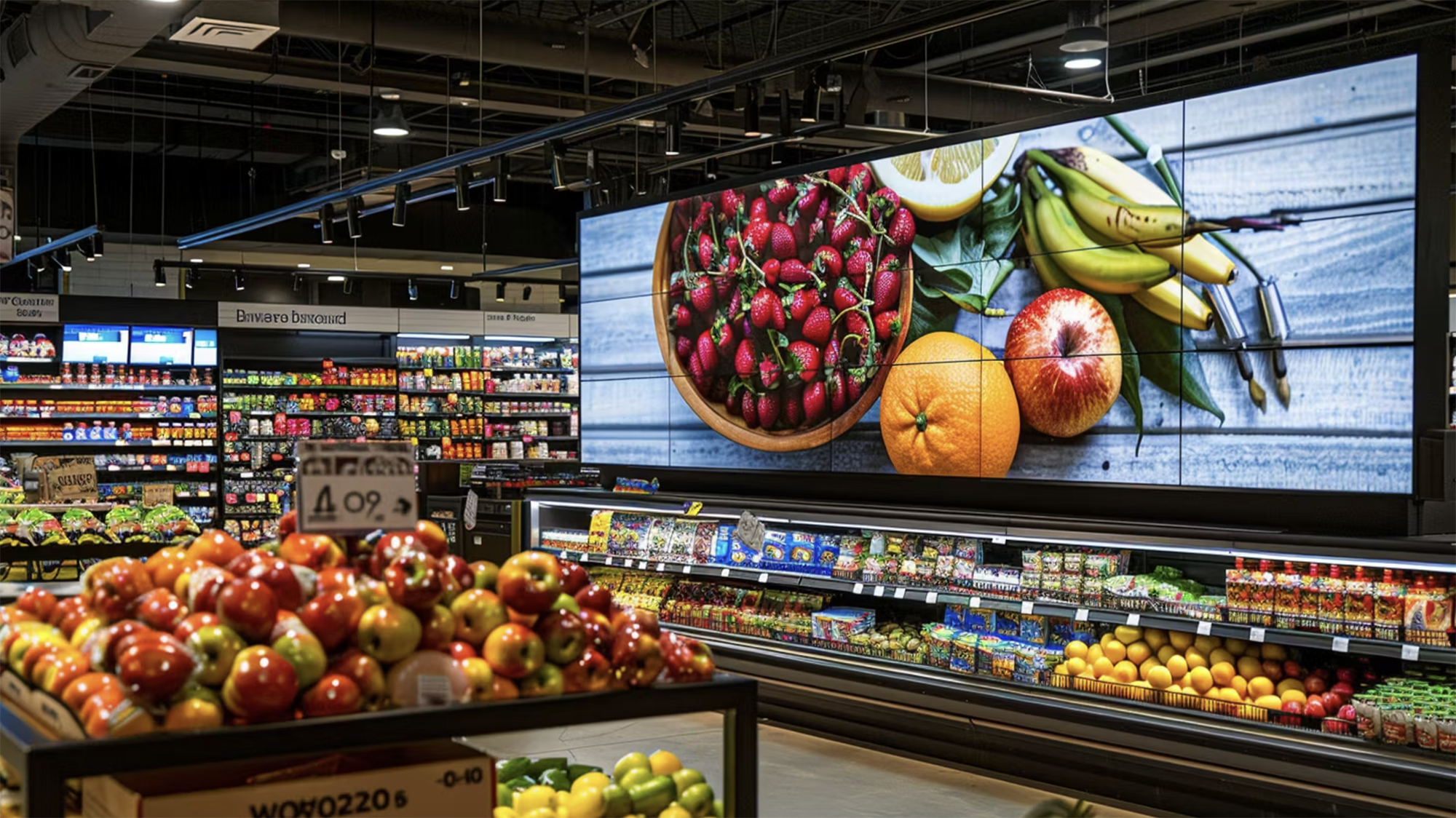How AI is Transforming Grocery: Tech Innovations Powering Personalization, Autonomous Checkout, and Delivery Solutions
.jpg)
At a Glance
- The AI in Food and Beverage market is projected to reach $311.6 billion by 2033, growing at a CAGR of 43.7% from 2024 to 2033.
- Digital grocery sales are expected to hit $61 billion in H1 2024, a 2.4% increase from H1 2023.
- While 81% of grocers focus on personalization, 92% of shoppers feel their grocery experience lacks personalization.
- AI helps retailers like Walmart and Kroger adjust prices in real time, optimizing profitability based on demand and competition.
- AI supports grocers in reducing waste and promoting eco-friendly practices by analyzing consumer behavior and optimizing supply chains.
Artificial Intelligence (AI) has emerged as a transformative force across various industries, and the grocery sector is no exception. The grocery sector is undergoing a significant transformation driven by AI. This change is critical as grocers strive to meet evolving consumer demands for speed, convenience, and personalized experiences. According to recent insights from Grocery Doppio, AI integration in grocery operations is projected to grow substantially, with digital grocery sales alone reaching $61 billion in H1 2024, a 2.4% increase from H1 2023.
Current Statistics
The adoption of AI in the grocery industry is accelerating remarkably. The AI in Food and Beverage market is projected to reach USD 311.6 billion by 2033, growing at a compound annual growth rate (CAGR) of 43.7% from 2024 to 2033. This growth reflects the increasing adoption of AI technologies in response to consumer demands for convenience, affordability, and fast food options.
The McKinsey report "The State of Grocery in North America 2023" identifies five key trends:
- Economic Pressure: Despite a decrease in inflation, food prices remain high, prompting consumers to seek cheaper options.
- E-commerce Growth: Online grocery spending has stabilized but remains above pre-pandemic levels, driven by consumer preference for convenience.
- Profitability Pressure: Rising capital expenditures have increased margin pressure for grocery retailers.
- Labor Market Challenges: Talent attraction and retention remain major concerns.
- Sustainability: Increasing regulatory and consumer focus on sustainability is driving operational changes.
Role of AI in Enhancing Grocery Operations
AI technologies are being utilized in various ways to streamline grocery operations:
- Personalized Shopping Experiences: AI-driven personalization is critical for enhancing customer loyalty and satisfaction. Reports indicate that 81% of grocers are prioritizing personalization, although 92% of shoppers feel their grocery shopping lacks personalization.
- Inventory Management: AI optimizes inventory by predicting demand and ensuring stock availability, reducing waste, and improving efficiency. The implementation of AI in inventory management has been pivotal for retailers like Walmart and Kroger.
- Dynamic Pricing: AI-driven pricing strategies help retailers like Walmart, Kroger, and Amazon adjust prices in real time based on demand and competition, maximizing profitability.
AI Adoption Among Independent Grocers
Independent grocers are leveraging AI to compete with larger chains. Alasdair James from Swiftly highlights how independent stores can utilize AI and machine learning to analyze first-party data, offering personalized customer experiences and improving operational efficiency. This shift helps smaller players stay competitive by optimizing inventory, reducing costs, and providing targeted promotions. Additionally, AI tools can predict demand based on historical data, seasonal trends, and local events, allowing independent grocers to manage their inventory more effectively, reduce waste, and ensure popular items are always in stock. AI-powered customer service solutions, such as chatbots, enhance operational efficiency by handling routine inquiries, freeing up staff to focus on more complex tasks and in-store customer interactions.
Market Projections
Looking ahead, the future of AI in the grocery sector appears promising. Market analysts predict that AI will continue to play a pivotal role in shaping the industry, with several key trends expected to drive its adoption:
- Personalization: AI will enable grocers to offer highly personalized shopping experiences by analyzing customer data and predicting preferences. Personalized recommendations, tailored promotions, and customized shopping lists will become standard features.
- Autonomous Checkout: The deployment of AI-powered autonomous checkout systems will increase, reducing wait times and improving the overall shopping experience. These systems use computer vision and machine learning to track items and facilitate seamless transactions.
- Supply Chain Optimization: AI will enhance supply chain efficiency by predicting demand, optimizing inventory levels, and reducing waste. Grocers will leverage AI to manage perishable goods more effectively and minimize stockouts.
- Enhanced Customer Service: AI-powered chatbots and virtual assistants will become more sophisticated, providing instant support to customers and addressing queries in real-time. This will improve customer satisfaction and loyalty.
- Sustainability Initiatives: AI will play a crucial role in promoting sustainability within the grocery sector. Grocers can implement eco-friendly practices and reduce their carbon footprint by analyzing consumer behavior and environmental impact.
Conclusion
The integration of AI in the grocery sector marks a significant milestone in the industry's evolution. As AI technologies continue to advance, grocers must recognize the potential of these innovations to transform their operations and enhance customer experiences. By embracing AI, regional grocers can navigate the challenges of the modern retail landscape, capitalize on emerging opportunities, and secure a prosperous future in the competitive world of grocery retail. By analyzing consumer behavior and environmental impact, grocers can implement eco-friendly practices and reduce their carbon footprint


.png)


.jpg)
.png)
.png)



.png)


